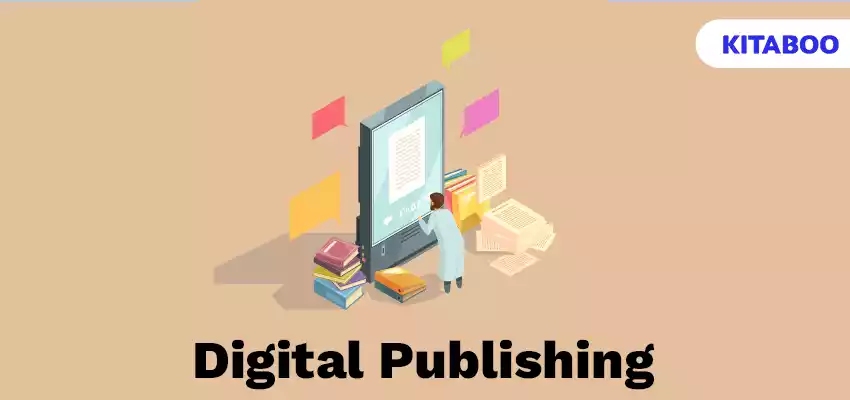
7 Things Every Digital Publisher Must Know
The digital revolution has continually transformed the world of publishing over the past couple of years. Gone are the days when publishing relied on a select few gatekeepers and the burden of limited distribution channels. Today, readers prefer digital versions as much, if not more, than physical books.
They’re cheaper, easier to access, and a more environmentally conscious choice. Likewise, the intervention of technologies is altering the way publishers do business. Publishers are creating interactive eBooks and are adapting to the latest trends to provide an immersive experience to readers.
If you’re a digital publisher or looking to get a foothold in this niche, this guide tells you seven key things you must know. We also dive into some key statistics that lay the foundation for the meteoric rise of this industry.
Table of Contents
I. Key Digital Publishing Statistics
II. 7 Things Every Digital Publisher Must Know
- Mobile-First & Adaptability
- Static vs. Dynamic Layout
- Format
- Analytics
- Digital Rights Management
- Interactivity
- Adopting New Technology
III. In Conclusion
Key Digital Publishing Statistics
In this section, we look at some of the key statistics you must keep in mind about the digital publishing industry.
- The global market for eBooks, which was estimated at $18,600 million in 2022, is projected to reach a size of $44,610 million by 2028.
- This growth is based on an annual CAGR of 15.7%.
- The number of eBook readers is projected to reach 1.1 billion by 2027.
- The user penetration rate, which stands at 13.3% in 2024, will rise to 14.1% by 2027.
- The United States dominates the global eBook market as a result of its strong digital infrastructure and is also expected to generate the highest revenue at $5,336 million in 2024.
These statistics show the immense potential on offer in the world of digital publishing, leading to the rise of key players like KITABOO, which offers the best digital publishing solutions with a host of key integrations.
Next, we look at seven key things every digital publisher must know.
7 Things Every Digital Publisher Must Know
1. Mobile-First & Adaptability
Readers these days have access to mobile devices and are using mobile data to consume content. What’s more, this widespread access to mobile devices allows users to consume bite-sized content as and when they please, paving the way for the rise of digital publishers and eBooks.
Hence, publishers must create quality and mobile-friendly content, allowing readers to access content as they want. The interface used must also feature quick loading times, a responsive design, and a layout that’s easy to navigate. The content must be adaptable to the latest devices and ensure there aren’t any disruptions in the user’s experience.
2. Static vs. Dynamic Layout
An eBook is available in two formats: fixed or reflowable. While the fixed layout replicates the physical book, reflowable formats adjust orientation with the device. Both formats work for different types of eBooks. The publisher must opt for a suitable layout according to the nature of the eBook and the desired end-user experience.
Further, given that user experience plays a key role in today’s market, the format or layout you choose must be responsive and meet the criteria mentioned in the previous section. Furthermore, it also helps publishers continuously source feedback to improve their UX with time.
3. Format
The preferred formats for digital publishing are ePUB and HTML. All formats have their own set of pros and cons. ePUB3 is considered the ideal format for an eBook. The key is to understand your audience’s needs and choose an appropriate format. You must also ensure that the format you choose is well-optimized for a mobile-first approach.
4. Analytics
It’s essential for publishers to know how their eBooks are been consumed by their targeted audience. Major digital publishing platforms provide analytics tools and metrics for a better understanding of your audience’s content preferences, and to identify and track all engagement-related metrics.
Teachers/trainers can use tools like these to understand the consumption of content they deliver. The insights derived from the in-built analytics can then be used to boost your publication’s reach, make key changes, and make your product more appealing.
5. Digital Rights Management
Content security in the digital world is a matter of concern for publishers. Digital Publishing Platforms offer content security via Digital Rights Management (DRM). It protects copyrighted content by encrypting all content in a DRM-locked state for piracy-free distribution.
6. Interactivity
By adding interactive elements, like audio, video, images, and text-to-speech functions, publishers can enhance the user experience. Learners, with interactive eBooks can interact and retain the information better.
As a result, depending on the nature of the eBook, a publisher can opt for interactivity features in their publications.
7. Adopting New Technology
Digital publishers can integrate technologies, like augmented reality and virtual reality with content. These technologies simulate the learner’s imagination by encouraging them to interact with the visuals ensuring better engagement and retention. Platforms like KITABOO offer some of the most advanced digital publishing solutions with the ability to integrate augmented reality.
Considering the nature of the publication, its purpose, and its target audience, integrating technology to create interactive eBooks can make the learning experience immersive and engaging.
In Conclusion
Given the rapid growth in content consumption from digital devices, it’s critical that a publisher pay close attention to the user experience and the learner’s expectations, particularly when designing publications for the K12 level or higher educational institutions.
These publications should work seamlessly across devices, but most importantly be mobile-friendly. With KITABOO’s advanced digital publishing solutions, you can design eBooks that incorporate a host of features, while leveraging the power of augmented reality.
Reach out to us or check out our live demo for more information.
Discover how a mobile-first training platform can help your organization.
KITABOO is a cloud-based platform to create, deliver & track mobile-first interactive training content.



